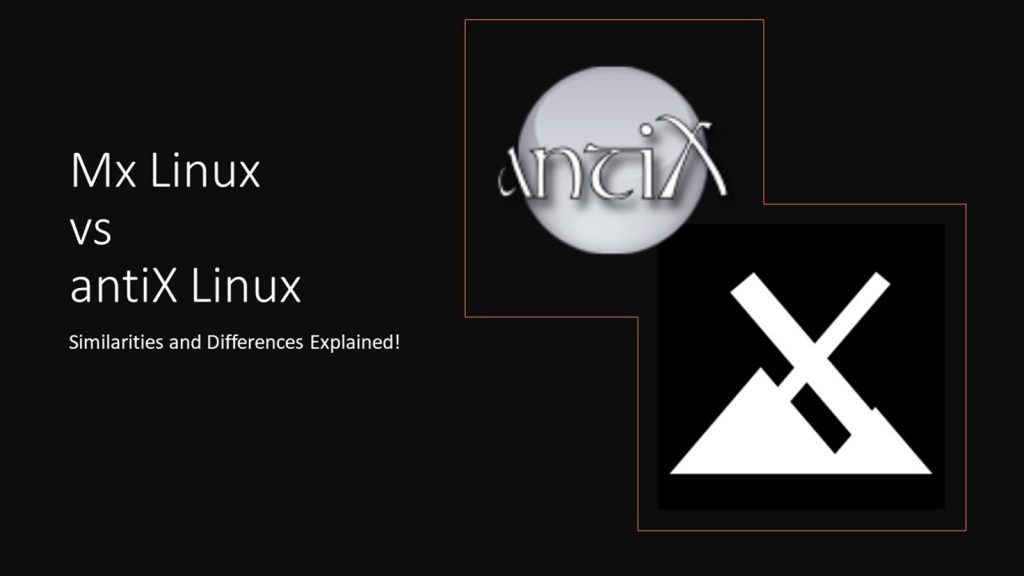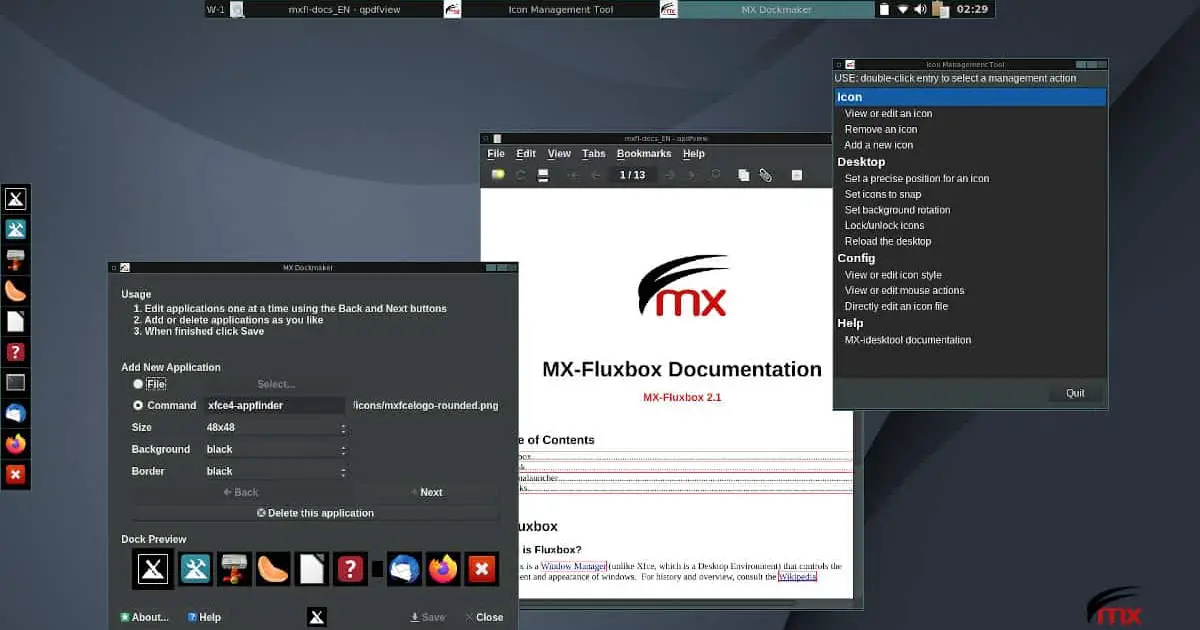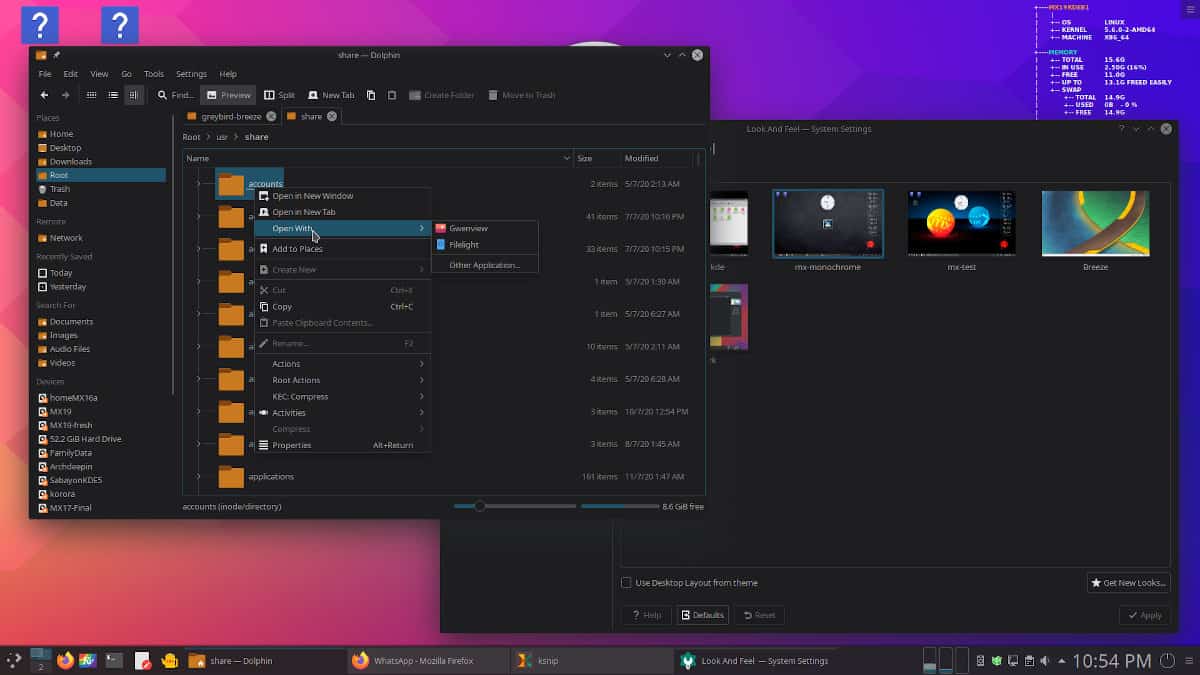Mx Linux Vs. Antix: Family Rivalry

Mx Linux and AntiX are two Debian-based Linux distributions that share a common ancestry. However, they have evolved in different directions, and each has its strengths and weaknesses.

Mx Linux

Mx Linux 21 is a popular midweight distro known for its stability, ease of use, and extensive software selection. Its Xfce desktop environment is intuitive and customizable, making it a good choice for both beginners and experienced users. Mx Linux also includes several unique features, such as the MX Package Installer, which makes it easy to install and manage software.
AntiX
AntiX is a lightweight distro designed for older computers and systems with limited resources. It uses the Fluxbox window manager, which is known for its speed and efficiency. AntiX is also very customizable, and users can easily change the look and feel of their system.
Head-to-Head Comparison
- Hardware requirements: AntiX has lower hardware requirements than Mx Linux, making it a better choice for older computers.
- Desktop environment: Mx Linux uses the Xfce desktop environment, while AntiX uses Fluxbox. Xfce is more user-friendly, while Fluxbox is more lightweight.
- Software selection: Mx Linux has a larger software selection than AntiX. This is because Mx Linux includes more software in its default installation.
- Customization: Both Mx Linux and AntiX are highly customizable. However, AntiX is more customizable because it uses a lightweight window manager.
Which distro is right for you?
If you have a newer computer and want a distro that is easy to use and has a wide range of software, then Mx Linux is a good choice. If you have an older computer or want a distro that is very lightweight and customizable, then AntiX is a good choice.
Ultimately, the best way to decide which distro is right for you is to try them both out.## [Mx Linux Vs. Antix: Family Rivalry]
Executive Summary
This article presents a comprehensive comparison of Mx Linux and AntiX, two Linux distributions based on the solid Debian foundation. Exploring their shared lineage and distinct features, the article dissects their desktop environments, software availability, hardware compatibility, user support, and potential target audiences.
Introduction
Emerging from the Debian lineage, Mx Linux and AntiX share a common heritage yet exhibit unique characteristics. Their distinct design philosophies cater to different user preferences, balancing ease of use with customization and system efficiency with lightweight performance. Delving into each distribution’s strengths and weaknesses will unveil the suitability of each for specific user requirements.
Distinguishing Features
Desktop Environments
-
Mx Linux: Xfce as the default desktop environment, renowned for its intuitive interface, minimal resource consumption, and extensibility through plugins.
-
AntiX: IceWM as the default, a lightweight and highly customizable window manager offering a highly responsive and customizable user experience.
Software Availability
-
Mx Linux: Extensive software repository based on Debian‘s vast package ecosystem, granting access to a wide array of applications.
-
AntiX: Pre-installed software suite emphasizing essential tools and utilities, favoring a lean and efficient system while allowing for additional installations from Debian repositories.
Hardware Compatibility
-
Mx Linux: Supports a broad range of hardware configurations due to its Debian base, ensuring compatibility with various devices.
-
AntiX: Designed for older computers with limited resources, offering a tailored ISO for low-end hardware to revitalize aging systems.
User Support
-
Mx Linux: Active community forum with dedicated members providing assistance and troubleshooting solutions.
-
AntiX: Comprehensive documentation and a responsive support team, catering to both experienced users and newcomers.
Target Audience
-
Mx Linux: Ideal for users seeking a user-friendly and stable operating system, balancing customizability with accessibility.
-
AntiX: Perfectly suited for those prioritizing system efficiency and performance on older or resource-constrained hardware.
Conclusion
Mx Linux and AntiX, while rooted in the same lineage, offer divergent experiences. Mx Linux excels with its user-centric design and extensive software ecosystem, while AntiX prioritizes efficiency and hardware compatibility. Ultimately, the choice between these two distributions hinges on specific user requirements and preferences. Both distributions deliver reliable and stable computing experiences, catering to diverse user profiles within the Linux ecosystem.
Keyword Phrase Tags
- Mx Linux
- AntiX
- Debian-Based Linux Distros
- Lightweight Linux Distributions
- Desktop Environments

Both MX Linux and AntiX are great distros, but I prefer MX Linux because it’s more user-friendly and has a wider range of software available.
I’ve tried both AntiX and MX Linux, and I found MX Linux to be much better. It’s more stable and has a better selection of software.
AntiX is a great distro for older computers, but it’s not as good as MX Linux. MX Linux is more up-to-date and has a better selection of software.
I don’t think there’s much difference between AntiX and MX Linux. They’re both based on Debian and they both offer a similar user experience.
AntiX is a great distro for older computers, but it’s not as good as MX Linux. MX Linux is more up-to-date and has a better selection of software.
I’ve tried both AntiX and MX Linux, and I found MX Linux to be much better. It’s more stable and has a better selection of software.
I think AntiX is a great distro for older computers, but it’s not as good as MX Linux. MX Linux is more up-to-date and has a better selection of software.
I’ve tried both AntiX and MX Linux, and I found MX Linux to be much better. It’s more stable and has a better selection of software.
AntiX is a great distro for older computers, but it’s not as good as MX Linux. MX Linux is more up-to-date and has a better selection of software.
I’ve tried both AntiX and MX Linux, and I’ve to say they’re both great distros. But MX Linux is still my favorite because of its wider software selection and better stability.